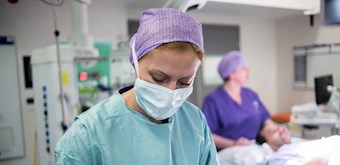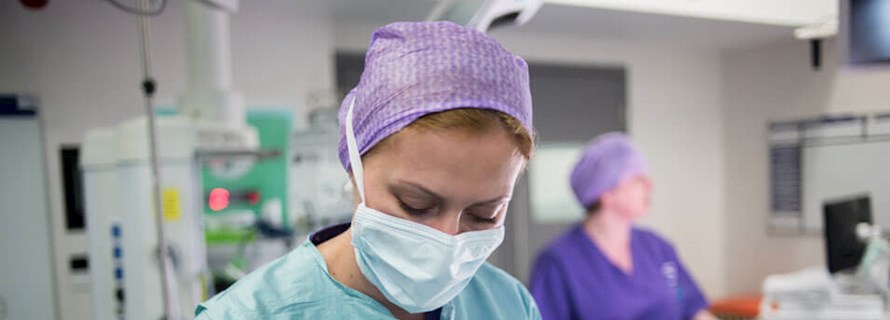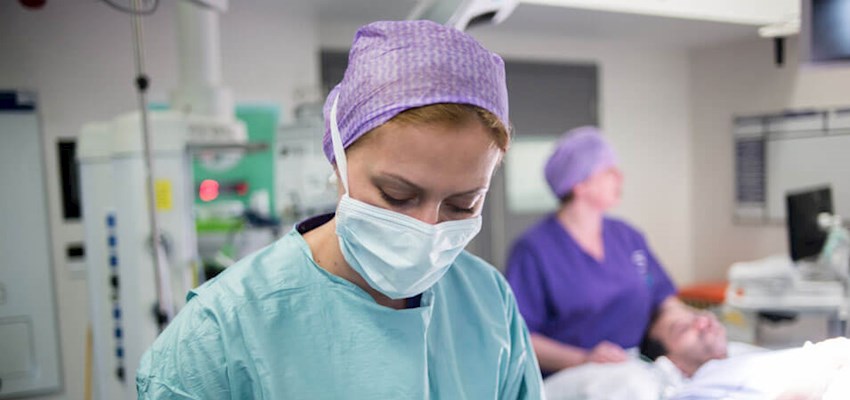Hickman lines and PICC lines
Central venous catheter placement
Types of central venous catheter to administer medicine directly into your vein, or to take blood samples
Why would I need a Hickmann line?
A Hickman line may be recommended if you need chemotherapy, antibiotics or nutritional supplements over a long period. It can also be used to draw blood samples.
The line stays in your chest so you won't need a new line inserted for each treatment. Inserting a line is a relatively quick procedure. The insertion of the line takes place in radiology, and is usually undertaken by an interventional radiologist. You will need to lie on your back on an X-ray table.
The line stays in your chest so you won't need a new line inserted for each treatment. Inserting a line is a relatively quick procedure. The insertion of the line takes place in radiology, and is usually undertaken by an interventional radiologist. You will need to lie on your back on an X-ray table.
Need to know
-
How is the line inserted? icon plus
You'll have a local anaesthetic to numb the area of your chest. Using ultrasound or X-rays to guide them, your radiologist will insert the Hickman line through a cut near your collarbone, into a large vein in your neck and towards your heart. The other end will run under your skin and out through a second cut in your chest or shoulder. This stays outside your body. Stitches will hold it in place, and may you need another X-ray to check its position.
An alternative is a PICC (peripherally inserted central catheter) line, which usually goes in your arm, but may not be suitable in all cases. The procedure should take approximately 30 minutes to one hour. -
How to prepare icon plus
Ahead of your procedure to insert a Hickman line or PICC line, your consultant will talk you through the procedure, what will happen and the benefits and potential risks involved. They'll discuss the medicines you take, and whether you need to stop taking any ahead of the operation.
On the day, you'll most likely need to avoid eating for six hours and drinking water for two hours beforehand. Your pulse and blood pressure will probably be checked too. You won't be able to drive for 24 hours after the procedure, so it's a good idea to arrange a lift or a taxi from the hospital in advance. -
After the insertion icon plus
We usually carry out the procedure as a day case, and you'll stay on the ward for two to four hours to ensure you've fully recovered. You may go home with your Hickman line in place. If so, you'll receive advice on keeping your line clean and dry, and you'll need a weekly appointment to change your dressing and to flush the line. Y
our nurse or consultant can administer medication through up to three lumens, small tubes within the line. The line can be removed during a minor procedure after completing your treatment. Contact your consultant immediately if you have any swelling, leakage or inflamed skin around the line, or if you develop a fever.
Our radiologists
We're proud to work with leading experts across a range of medical fields, whose skills are matched by their integrity and compassion.




Our Locations
From complex surgery to straightforward procedures, we provide exceptional care across our network of hospitals, outpatient centres and specialist clinics.
Book an appointment
Our team can help with any enquiries or you can make an appointment with one of our experienced consultants.
Call us today
020 7079 4344
This content is intended for general information only and does not replace the need for personal advice from a qualified health professional.